Taming the Slope: Landscaping Ideas for a Steep Hill
If you’ve got a steep hill in your yard, you’ll know exactly what I mean when I say it’s both a blessing and a curse.

On one hand, there’s potential for a stunning layered garden or a dramatic view. On the other hand… mowing?
Forget about it. Erosion? Constant worry. Slippery slopes? Been there, slid down that.
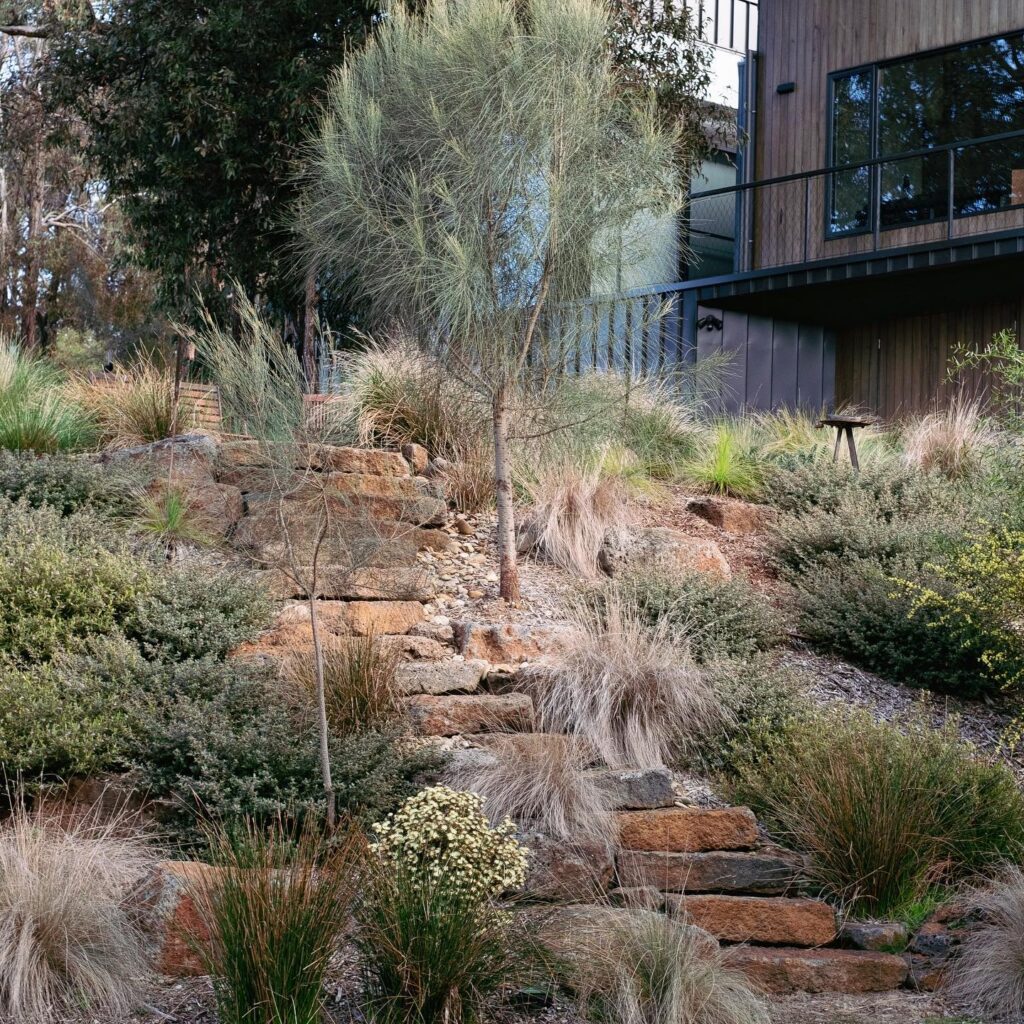
But here’s the thing—once you stop trying to fight the slope and start working with it, that hill becomes a whole new opportunity. Trust me, it doesn’t have to be a problem spot anymore.
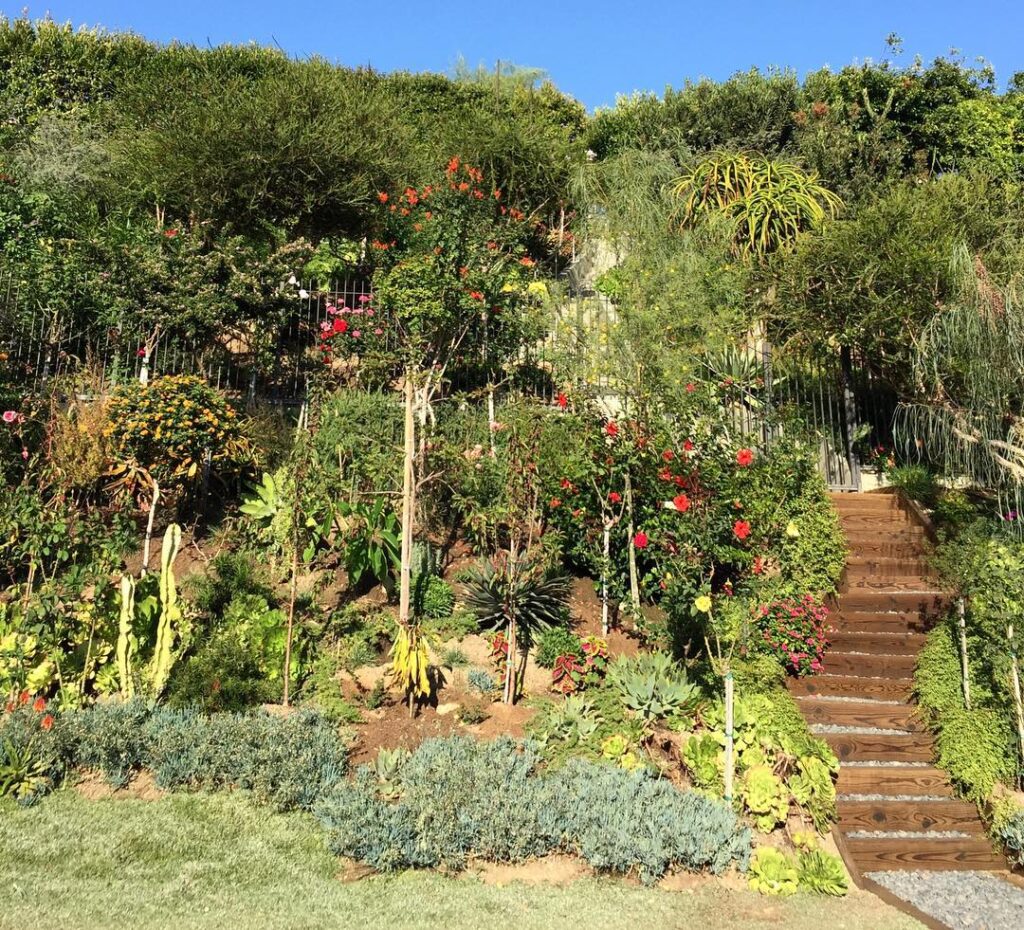
Turn That Hill Into a Garden Stage
Slopes are naturally dramatic, so why not use that? Instead of planting randomly and hoping something clings on for dear life, think in layers.

Literally. Terracing is the go-to move for steep hills. You can do this with natural stone, timber, or even recycled concrete blocks if you’re after something more rustic.
I’ve seen Kiwis here in Auckland turn the most frustrating inclines into multi-level veggie gardens, native shrub banks, and even seating tiers.
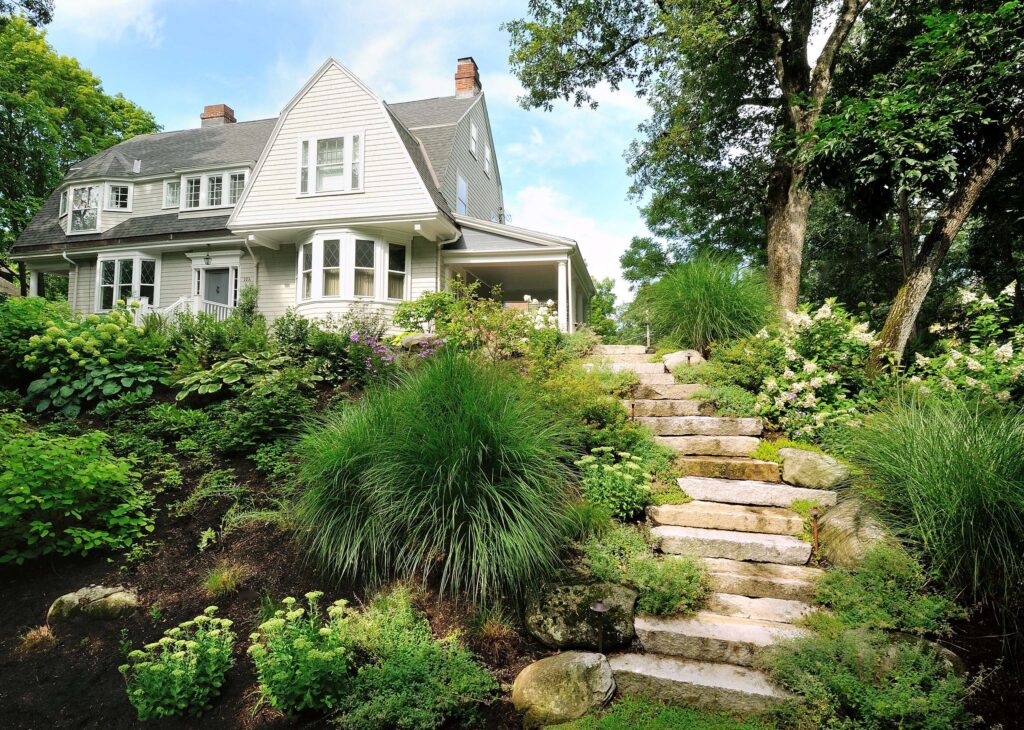
It’s sort of like carving steps into the earth and saying, “Right, we’re doing it my way now.”
And when you break it up into levels, it becomes way easier to water, weed, and plant without doing an accidental somersault down the garden.
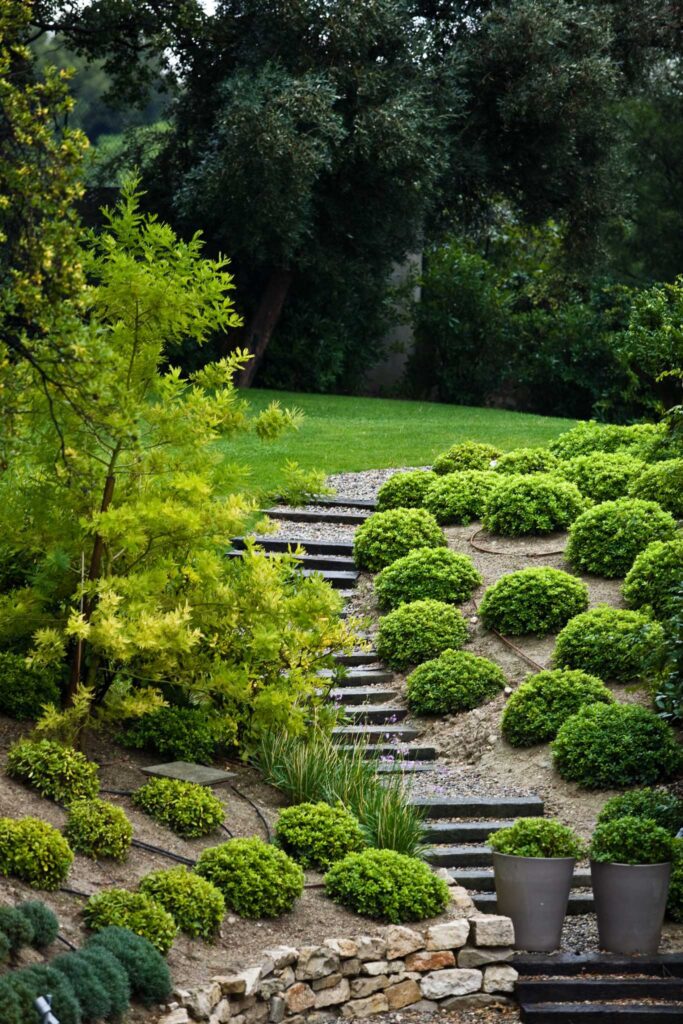
Let Gravity Do Some Work
Water always wants to go downhill, so if you’ve got drainage issues, this is your moment to shine.
French drains, gravel trenches, or dry creek beds can help guide rainwater instead of letting it wash your topsoil away.
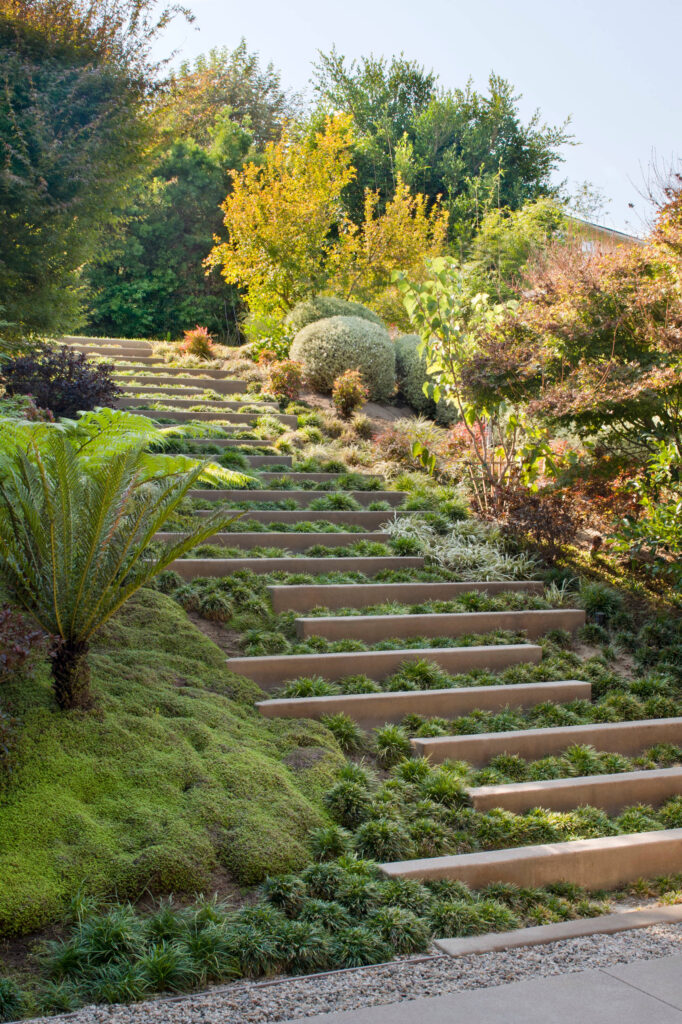
Even better, plant deeply rooted ground covers that act like nature’s netting—holding everything together while looking lush. Think creeping thyme, native grasses, or even succulents like sedum.
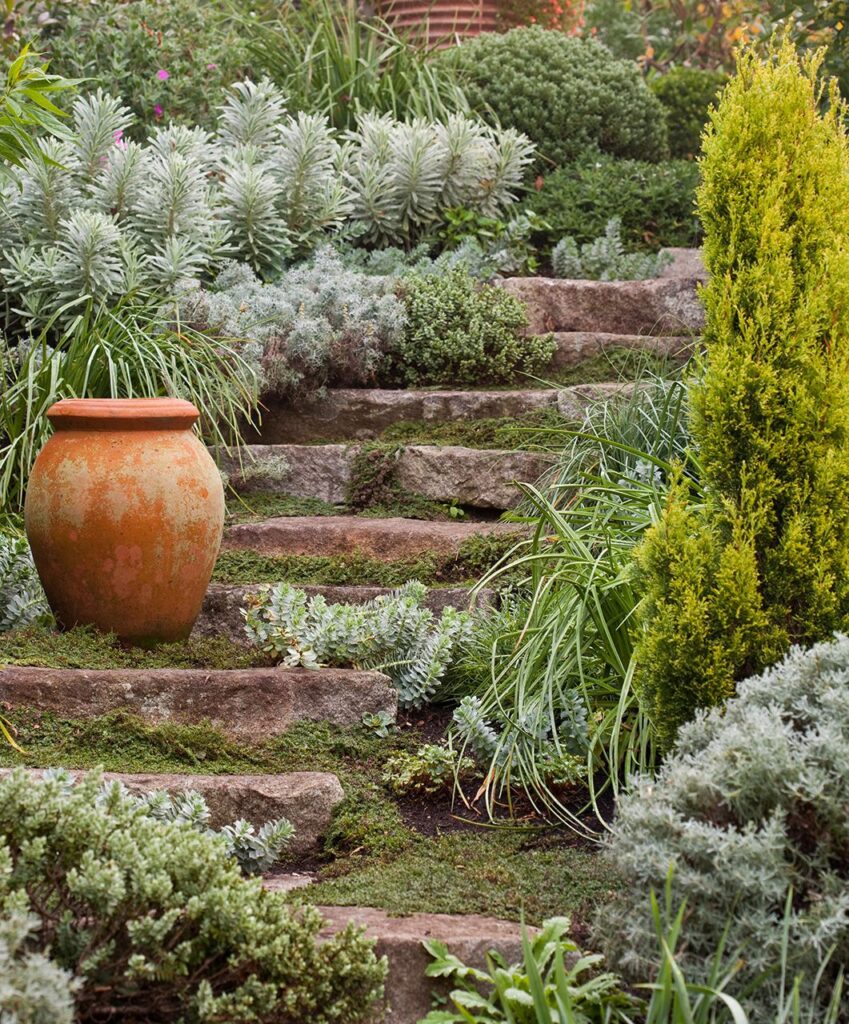
They’re low-maintenance and pretty much indestructible. Which is what we need when the weather goes all-in with a surprise downpour (hello, Auckland spring).
Steps, Paths, and the Joy of Not Falling Over
If you’re actually going to use that slope—for walking, access, or even just sitting with a cup of coffee—you’ll want a path.

Not the muddy goat track that ends in a twisted ankle. A real path. Something with grip, rhythm, and intention.
Natural stone steps look gorgeous and blend right into the landscape, but even railway sleepers or recycled bricks can work a treat.
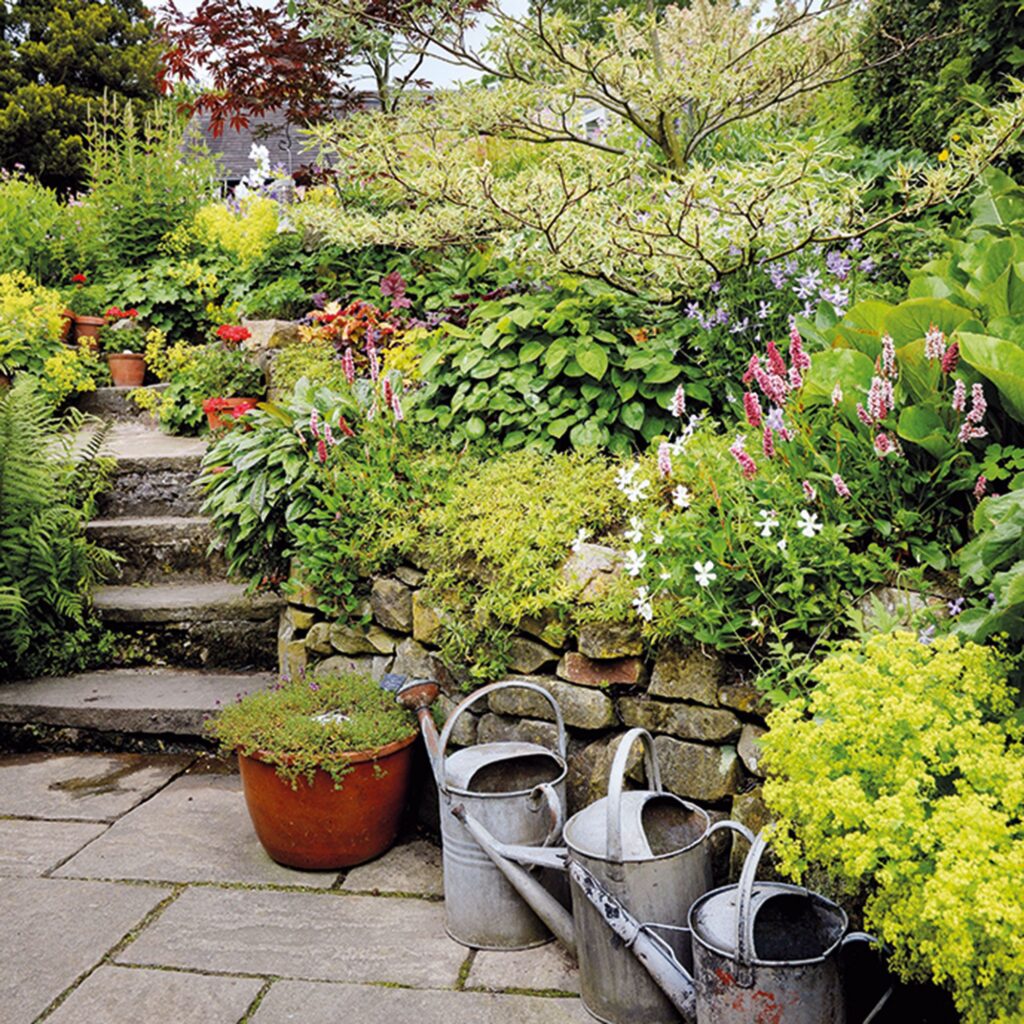
Just don’t make them too narrow or steep. Think about how you’ll carry a watering can or balance a tray of lemonade on the way down. Or up.
Add a simple handrail if the incline’s gnarly—it doesn’t have to ruin the look. A timber post-and-rope setup feels more like a beach boardwalk than a safety rail.
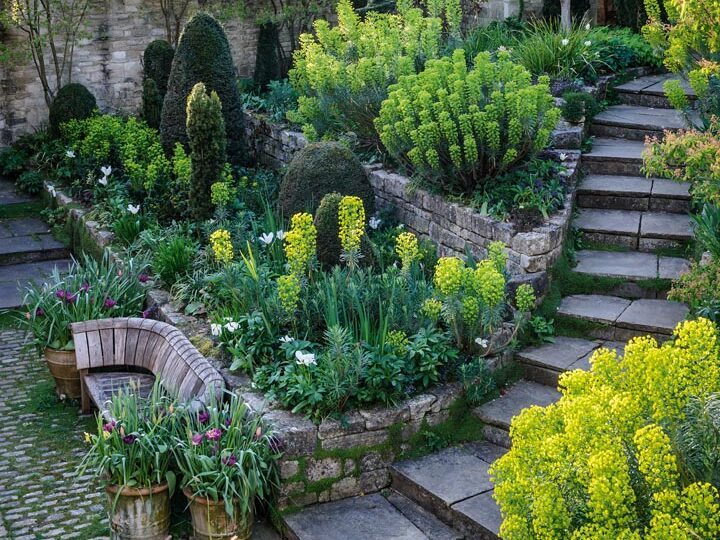
Feature Plants With Bold Personalities
When planting on a hill, I go for structure first. Big statement plants like flax (harakeke), dwarf trees, or ornamental grasses create visual anchors that draw your eye up or down the slope.

Then fill in the rest with hardy fillers that don’t mind the incline. If you’re dealing with wind (classic coastal issue), stick to toughies that won’t get battered—like hebes, rosemary, or lavender.
Clump in odd numbers, stagger them, and repeat patterns so it doesn’t look chaotic. Even if the land is dramatic, the planting can still feel balanced and intentional.
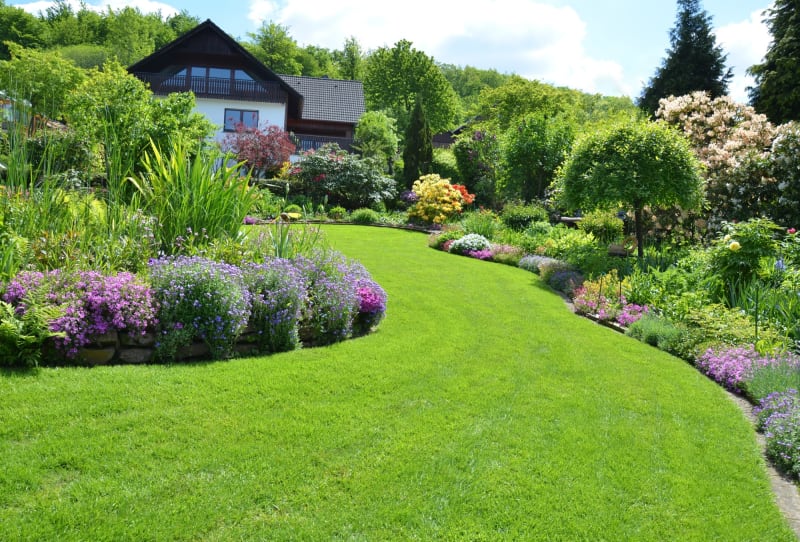
Lighting, Seating, and Other Finishing Touches
Once the slope’s under control, don’t forget to actually enjoy it. A levelled-out spot halfway down a hill can be the perfect perch.
Add a bench, maybe a fire bowl, and boom—you’ve got a hidden chill zone with a view.
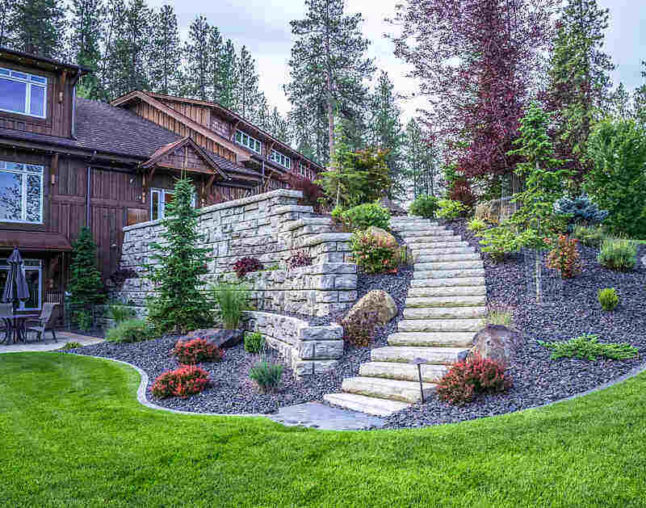
Low-voltage lights along stairs or paths help at night and add a bit of magic. Especially if you’ve planted silvery or reflective foliage that catches the glow.
What Used to Be a Headache…

…can actually turn into the standout part of your whole yard. It just takes a bit of planning, a few solid weekends, and probably a few strong coffees.
Hills aren’t always easy, but they’re never boring—and when done right, they’re downright spectacular.

So if you’ve been staring at that steep patch of land like it’s mocking you, just know there’s a way forward.
Terraces, steps, lush plants, and a few clever tricks—and you’ll wonder why you didn’t tackle it sooner.



